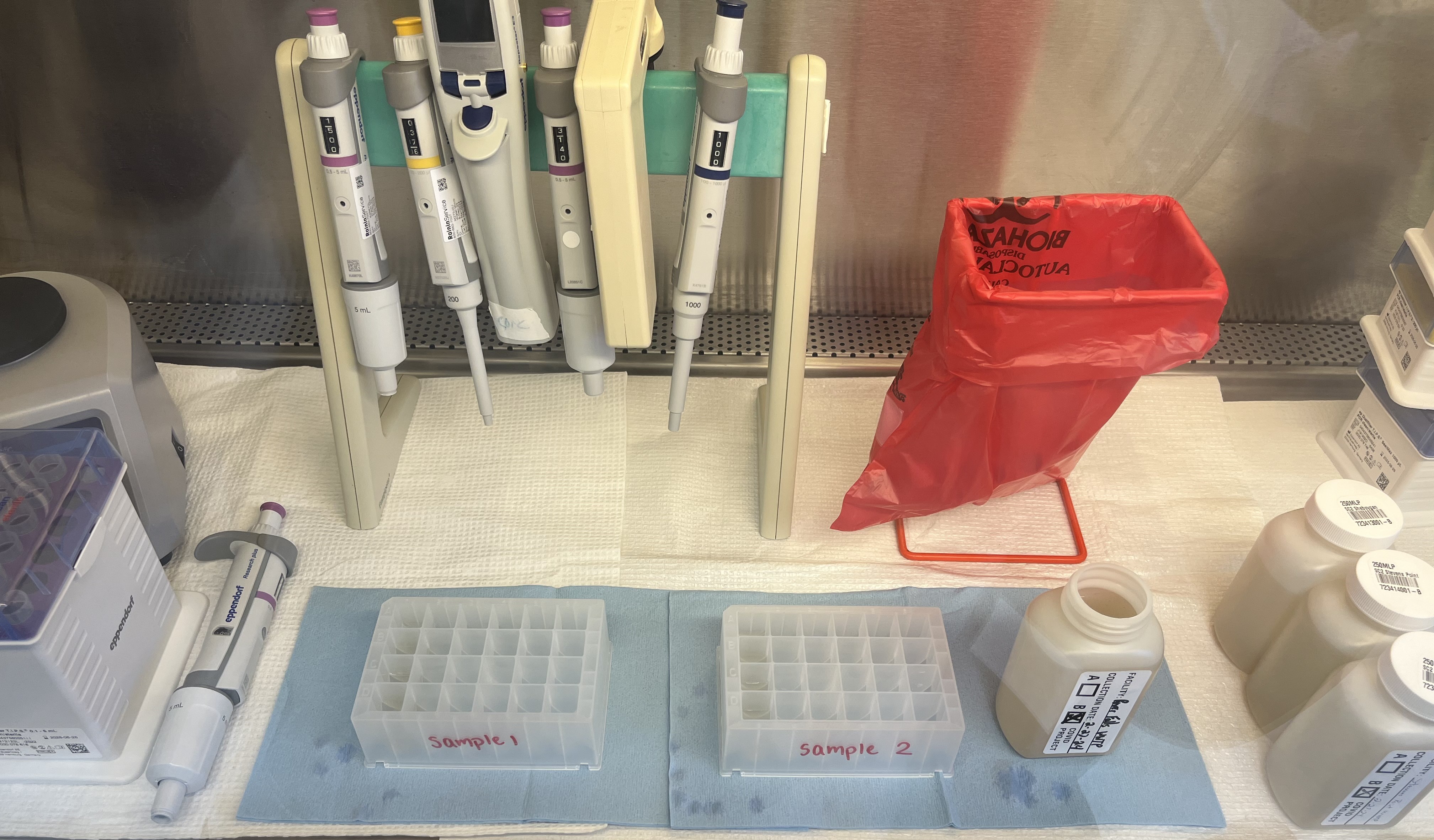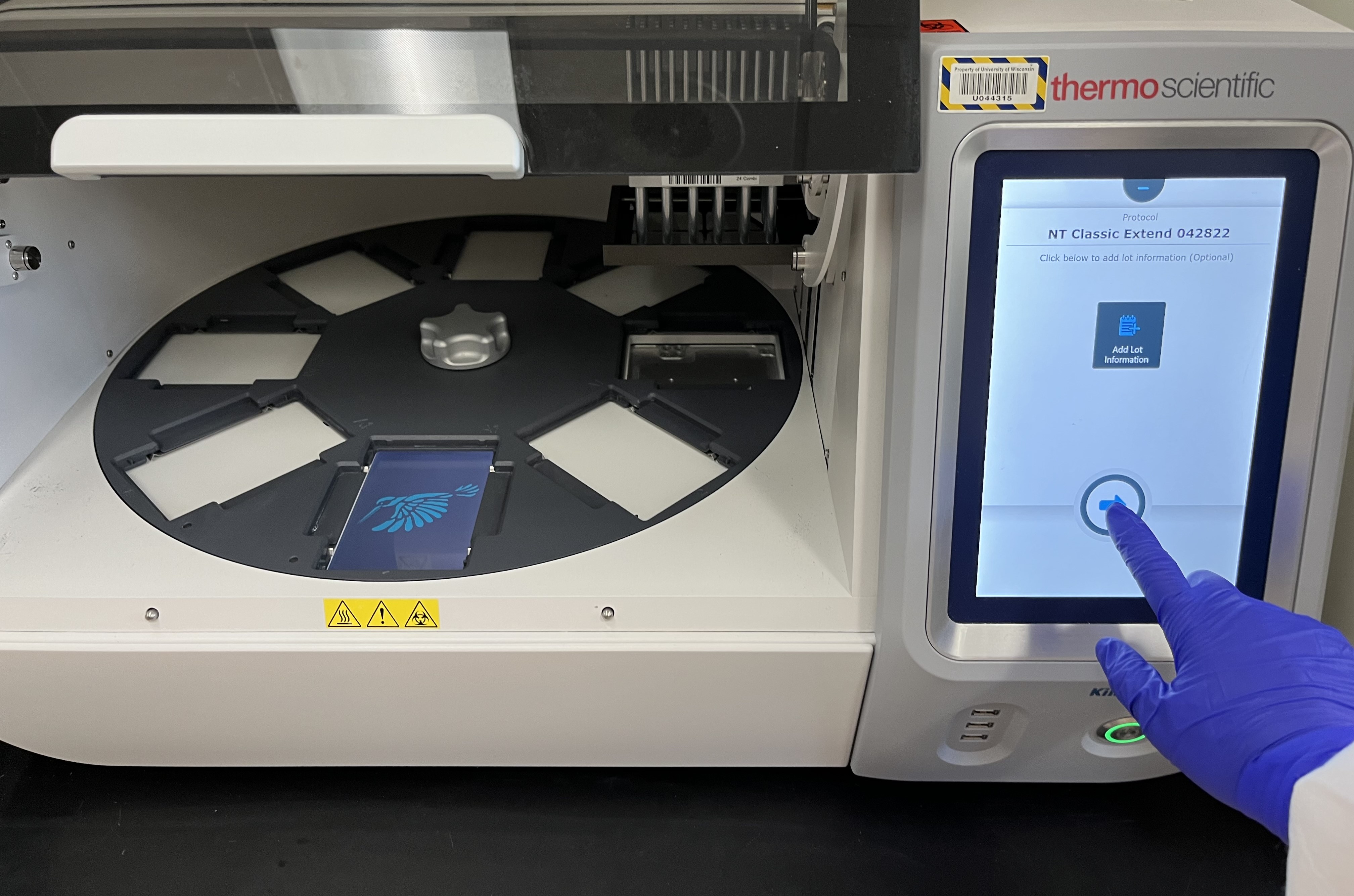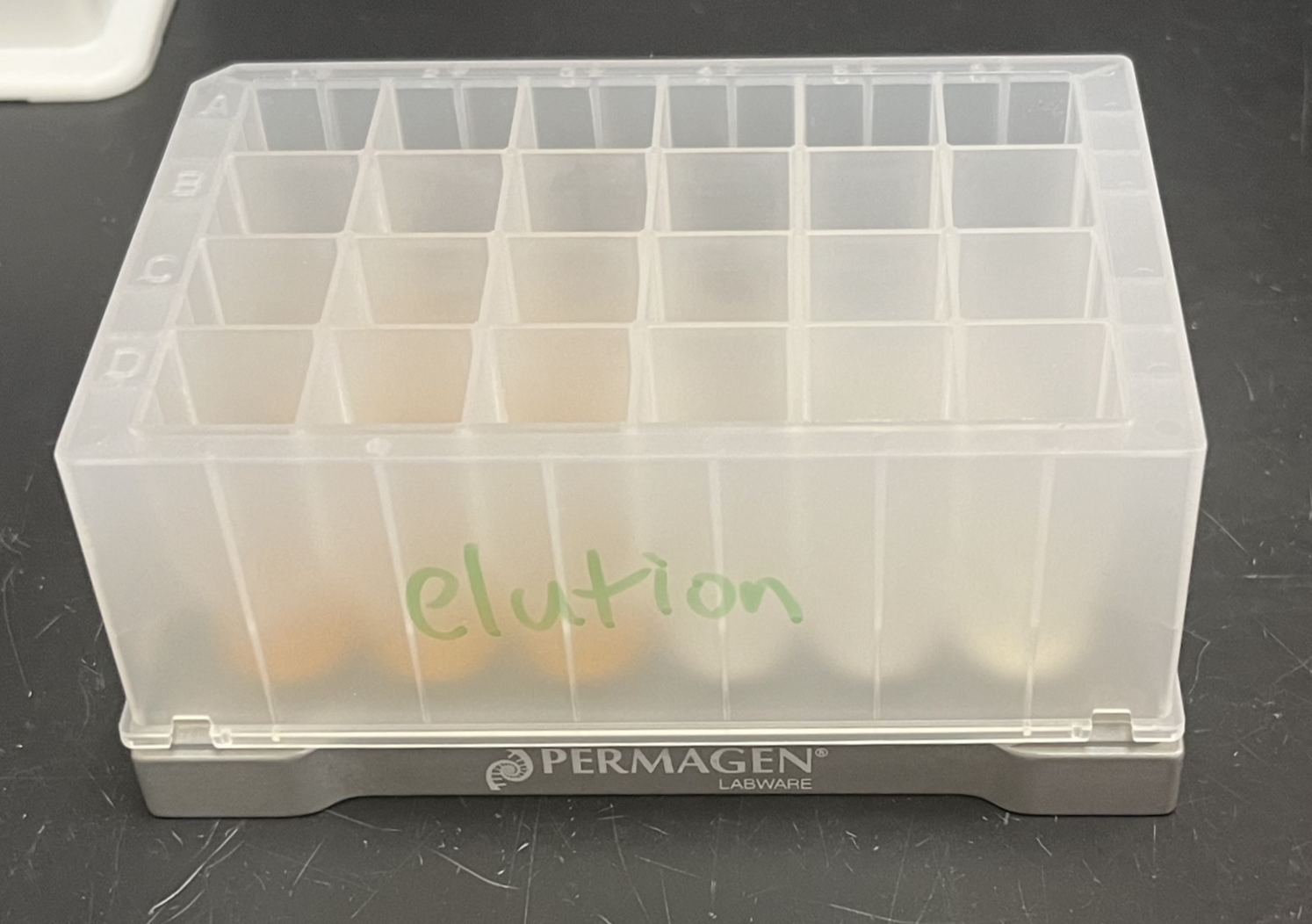Automated concentration of viral particles in wastewater samples using Nanotrap Microbiome A Beads
Ashlie McCunn, Dagmara Antkiewicz, Adelaide Roguet
Abstract
This method describes how to concentrate viral particles in water samples using magnetic beads (Nanotrap® Microbiome A Particles) to enable the subsequent quantification of microbial organisms in those samples. This method uses the KingFisherTMApex automation system and may be used for wastewater, drinking water, surface and recreational waters.
Before start
Before and after using the BSC, clean work area with 10% bleach, followed by ELIMINaseTM, and 70% ethanol. Then, turn on the BSC interior ultraviolet (UV) light for at least 15 minutes.

When using the benchtop, clean workspace area with 10% bleach, followed by ELIMINaseTM, and then 70% ethanol before and after use.

Steps
Sample Spike Prior to Concentration
Upon receipt, the temperatures of wastewater samples are measured and recorded. Samples with temperatures less than 2°C and greater than 10°C are recorded and flagged as temperatures outside of this range (2°C - 10°C) may compromise the sample quality.
Spike wastewater samples with 20µL of bovine coronavirus vaccine (BCoV) per 250 mL of wastewater sample to serve as a virus recovery control measure at least 20 minutes before concentration.
Separately, spike 50 mL of 10% Phosphate Buffered Saline (PBS) with 4µL BCoV to serve as a method blank.
Sample receiving and spiking will take roughly 1 hour for 15-20 samples.
Store samples at 4°C throughout processing.
Concentration Preparation
Obtain three KingFisher Deep Well 24 Plates and one KingFisher Deep Well 24 Tip Plate.
For the Elution plate: On the benchtop, add 600µL of
Add 50µL of Nanotrap Enhancement Reagent 2 to all wells in both Sample 1 and Sample 2 plates.
Remove Nanotrap Microbiome A Particles from refrigerator and vortex thoroughly (10-20 seconds). Avoid leaving magnetic particles at room temperature for an extensive amount of time (5 minutes).
Immediately after vortexing, add 75µL of Nanotrap Microbiome A Particles to all wells with wastewater sample in both Sample 1 and Sample 2 plates.
Concentration: Loading KingFisher Apex
Go to the menu screen on the Thermo Scientific KingFisher Apex and select the program titled “NT Classic Extend 042822”.
Load the different plates according to the instructions on the screen. Ensure all 24-well plates are loaded with A1 corner in the upper right corner of the instrument's plate tray.
Lower the door and start the program. The program will run for 60 minutes.
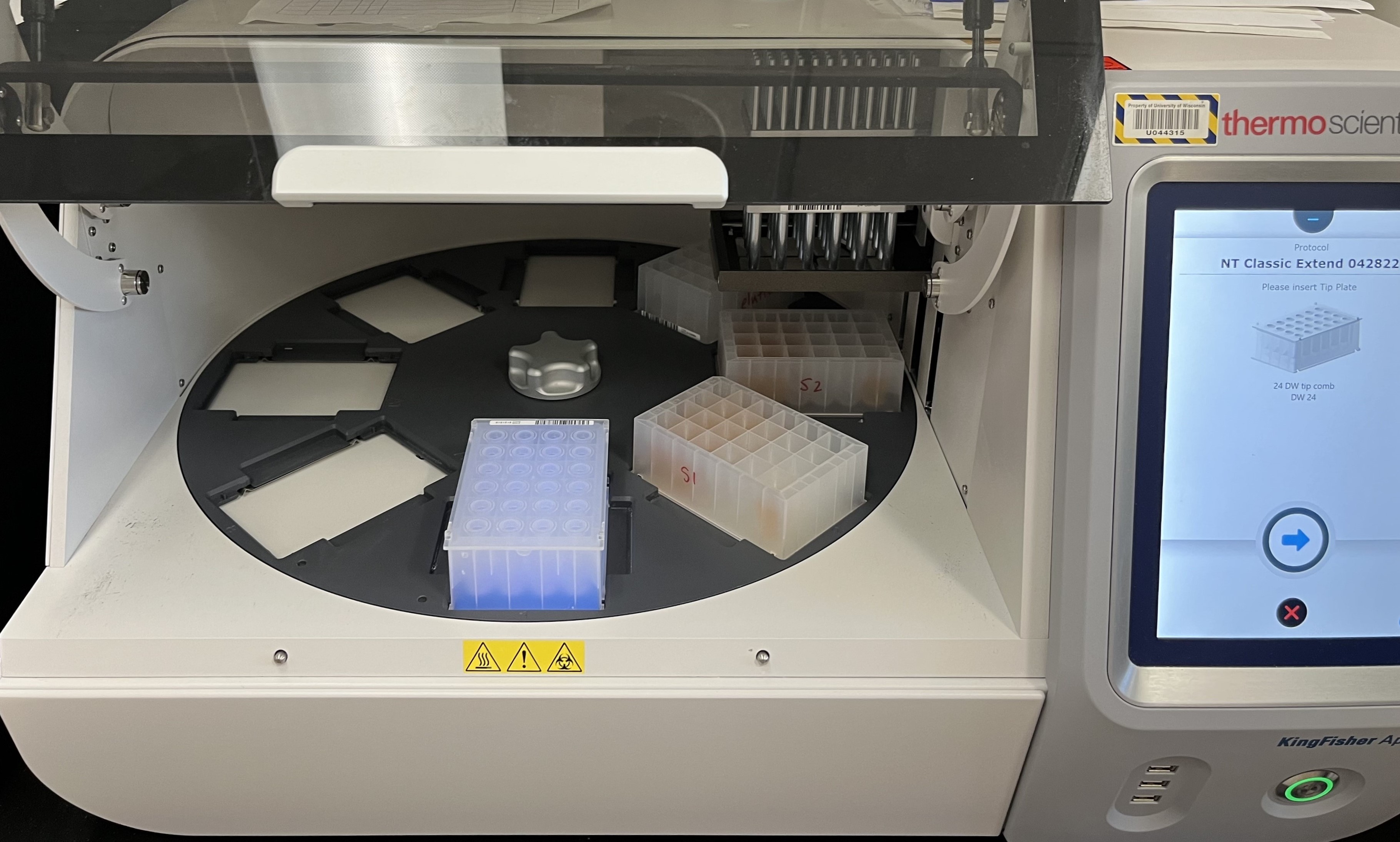
Concentration: Unloading KingFisher Apex
When the NT Classic Extend 042822 program is finished remove all plates from the Kingfisher Apex as instructed by the instrument prompts.
Discard Sample 1 plate, Sample 2 plate, and Tip plate.
Keep the Elution plate for the next step.
Concentrated Wastewater Samples
Ensure magnetic beads have been separated from samples by looking for a solid ring around the base of each well (see photos below). Bead rings should be visible after sitting on magnetic separation plate for 7-10 minutes.
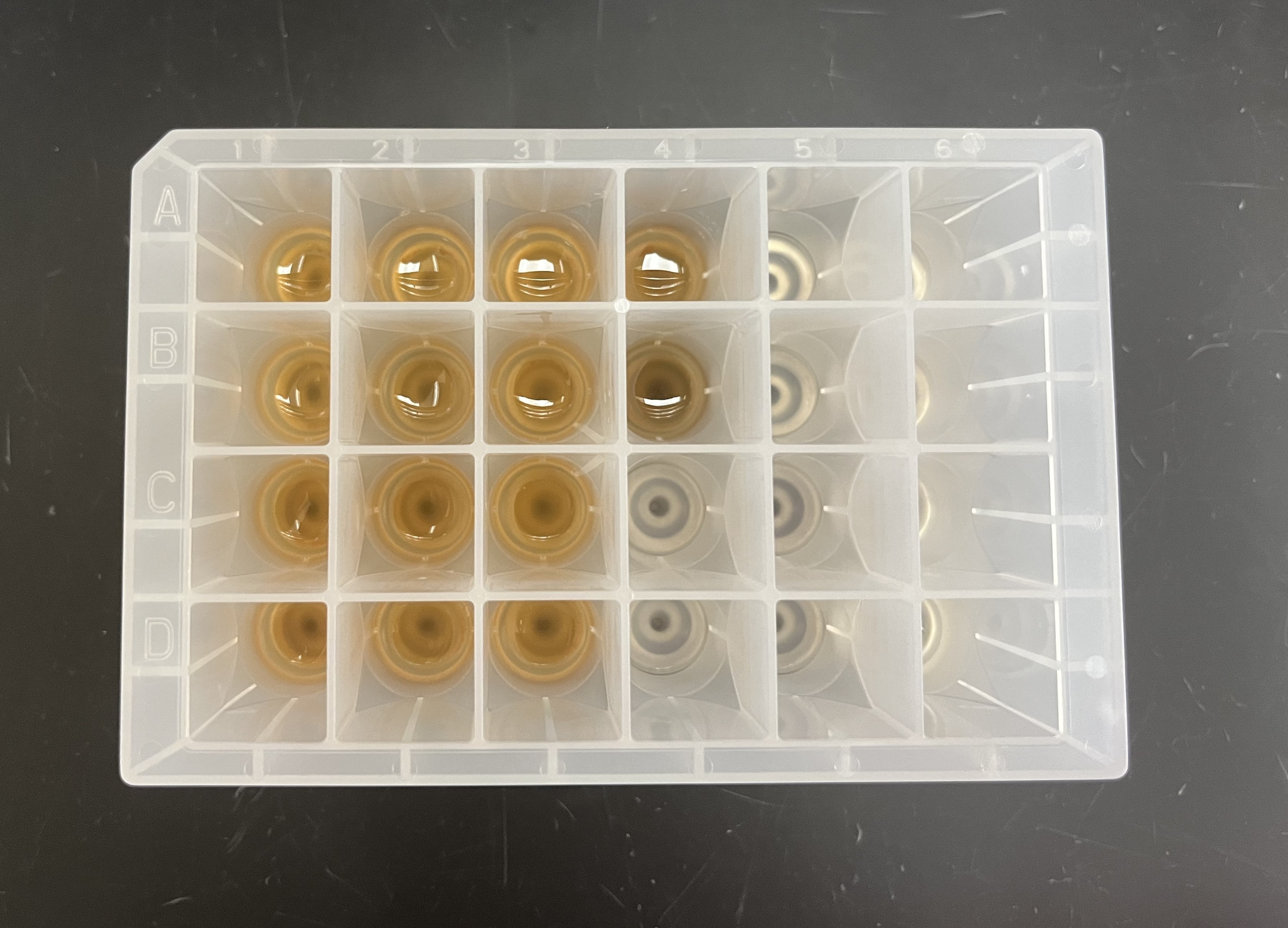

Transfer 600µL of sample from the elution plate (still sitting on the ring magnet plate) to its corresponding labeled storage tube. Be careful not to touch the tip of the pipette to the ring of magnetic beads at the base of the well. If the magnetic beads are transferred to the archive sample, they will interfere with the extraction process.
Once all samples are removed, discard the Elution plate.
Extraction
Extraction of SARS-CoV-2 nucleic acid material may now be performed on the concentrated wastewater samples using any extraction method.
If not performing extraction on the concentrated samples, go to the next step.
Archive Storage
Store the concentrated wastewater samples in a freezer at -80°C or below for up to 2 years.

